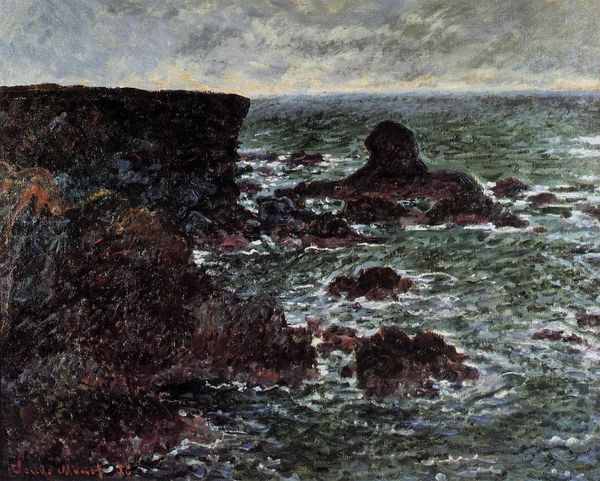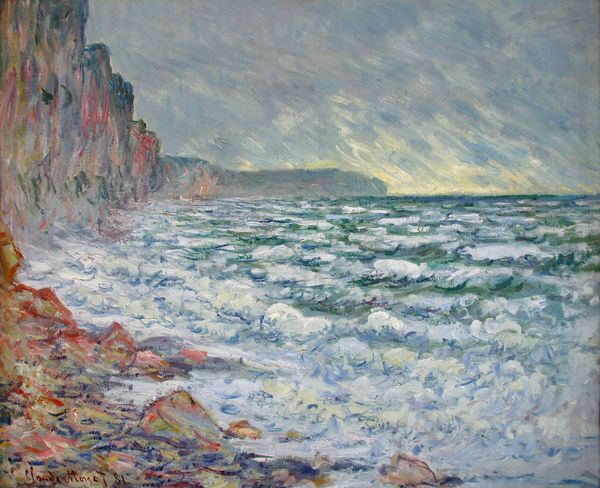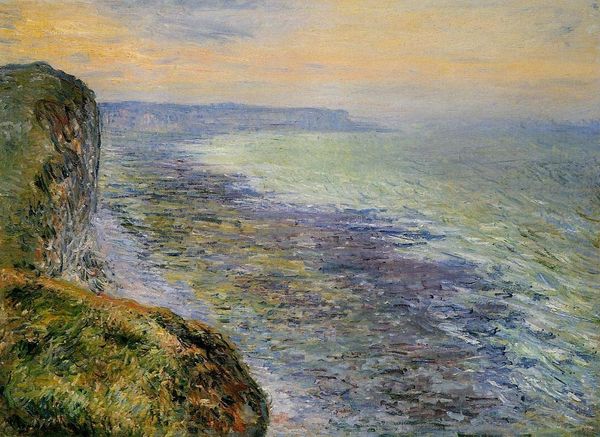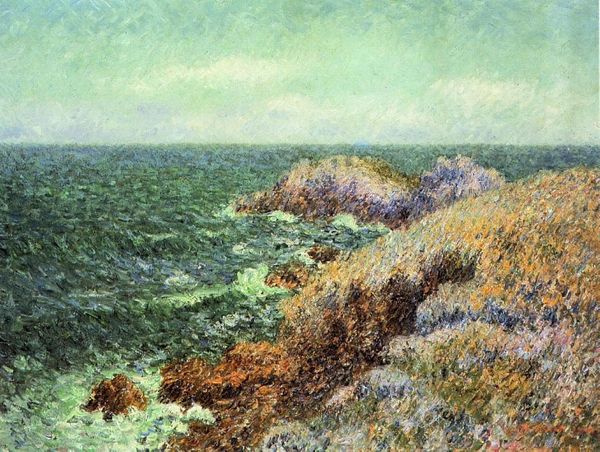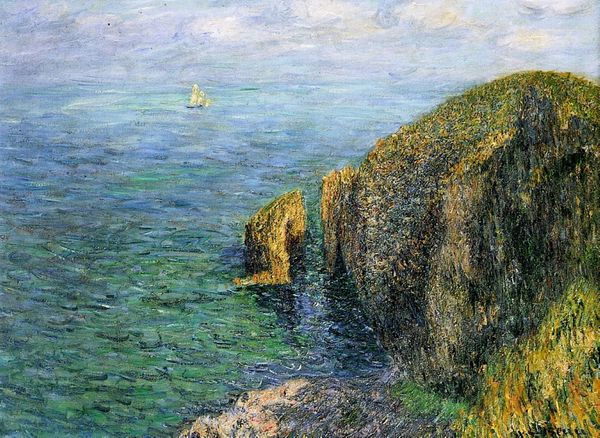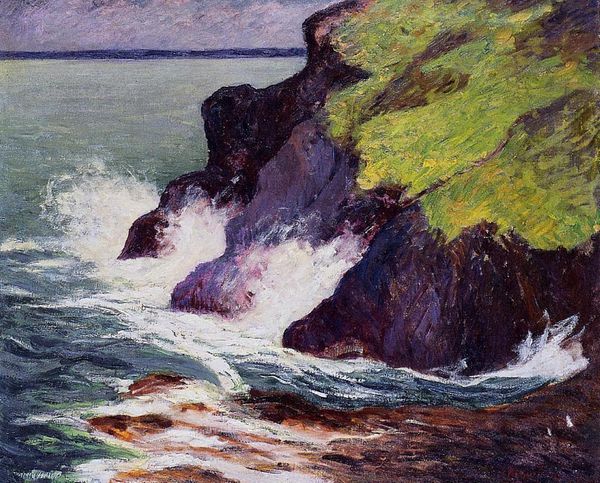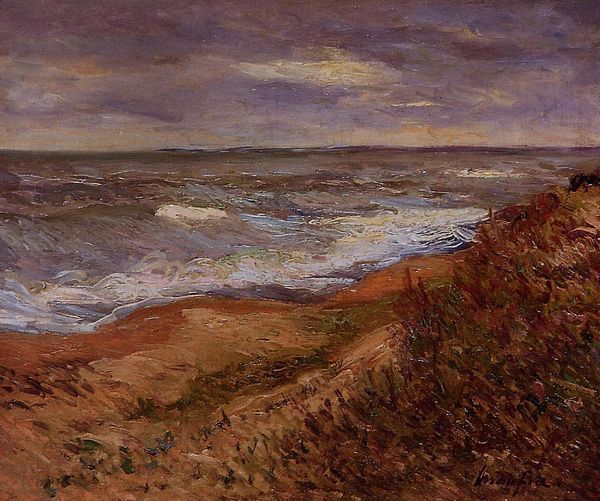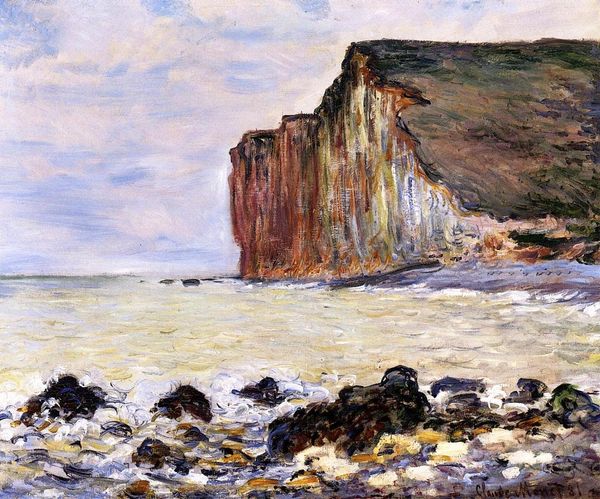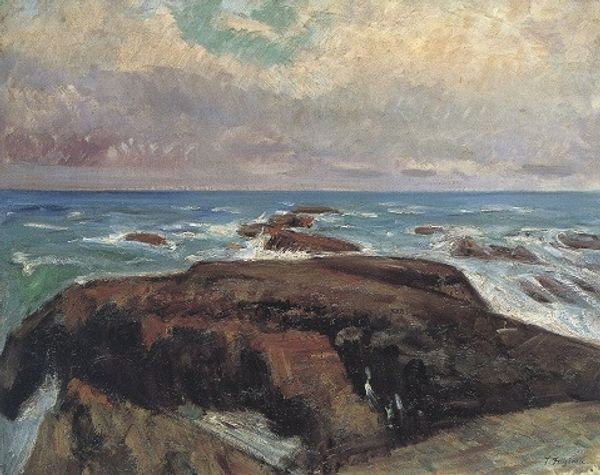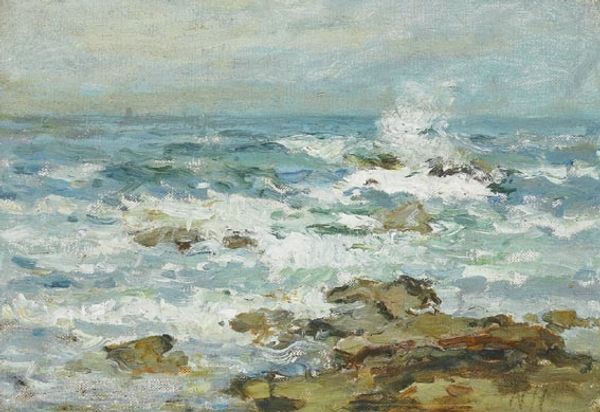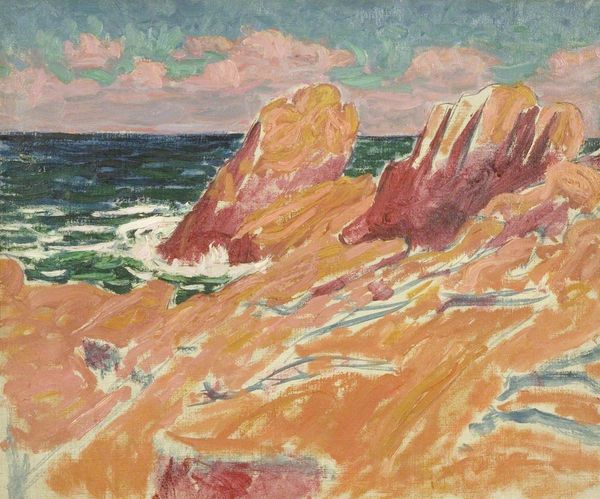
Copyright: Public domain
Curator: The briskness in this painting hits you right away, doesn’t it? A churning energy. Editor: Indeed. This is Claude Monet’s "Waves and Rocks at Pourville," executed in 1882. A perfect demonstration of plein-air painting using oils, showcasing the transient effects of light and atmosphere on the Normandy coast. Curator: The cliff face to the right feels substantial, almost brutally so, next to the fleeting reflections on the water. I notice the painterly texture: loose brushstrokes defining form and light, particularly where the sea foams around the rocks. Editor: Observe how the composition divides roughly into thirds, horizontally. The lower third, dominated by the wave activity. The middle, the distant headland and a hint of sky, leading us towards the top section, where a muted sky sits, completing this trinity. Curator: Interesting how Monet gives almost equal weight to the water and sky – traditional landscape painting often prioritized the land as the focal point. Editor: Perhaps. But if we read this in iconographic terms, one could say that the sea here represents the subconscious, a boundless and ever-changing realm. Whereas the rock is a place of shelter in many mythologies. That position gives it symbolic weight in human endeavors to cope with emotional instability. Curator: Fascinating perspective, considering the era's increasing focus on individual subjectivity. Yet, structurally, the impasto technique draws my focus. Monet used dabs of color rather than mixing on the palette to achieve vibrancy. A very different effect than, say, academic painting of the time. Editor: This contrast extends beyond technique, touching the viewer's sensory engagement. We feel the mist and smell the salt. The entire artwork speaks of impressions, sensory overwhelm as the real essence of the beach as experience. Curator: Monet clearly had something insightful to share about human perceptions of our surroundings and nature's sublime impact upon our inner selves. Editor: Yes. A testament to the emotional weight conveyed when perception and visual expression meet and merge in such an elegant interplay.
Comments
No comments
Be the first to comment and join the conversation on the ultimate creative platform.
